#stingrays
Photo









Sea and waterside creatures A
#line stickers#sea and waterside creatures a#fish#sharks#otters#octopus#jellyfish#stingrays#isopods#coelacanths
7K notes
·
View notes
Text
Underwater Flight
Both beautiful & terrifying
649 notes
·
View notes
Text

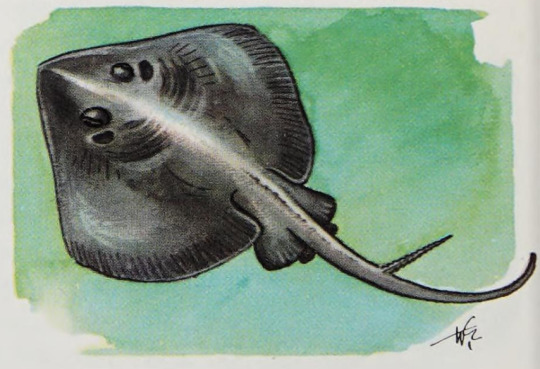
Shovelnose guitarfish (Pseudobatos productus), Common stingray (Dasyatis pastinaca)
Fishes of the World. Written by Hans Hvass. Illustrated by Wilhelm Eigener. Originally published in 1964.
Internet Archive
#marine life#fish#cartilaginous fish#rays#shovelnose rays#shovelnose guitarfish#stingrays#common stingray#Wilhelm Eigener
218 notes
·
View notes
Text
Taxonomy Tournament: Chordata

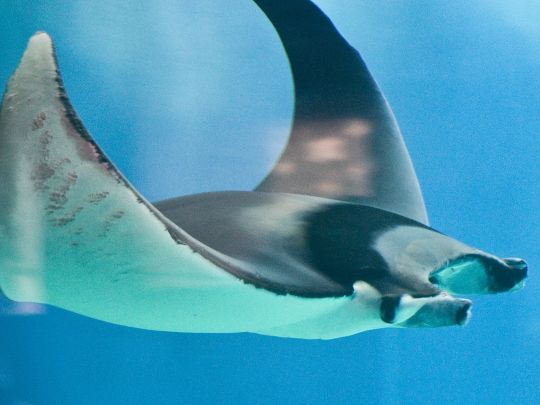
Myxiniformes. This order is known as hagfish, jawless fish which release slime from their skin to protect themselves from predators. They are the only known living species to have a skull but no vertebral column.
Myliobatiformes. This order of batoids includes stingrays and manta rays.
#animals#biology#polls#poll tournament#zoology#hagfish#stingrays#manta rays#fish#rays#Myxiniformes#Myliobatiformes#0xbv0x34
200 notes
·
View notes
Text
#aquarium#aquariums#support zoos and aquariums#mando’s polls#sharks#dolphins#fish#stingrays#sea otters#penguins#polar bears
2K notes
·
View notes
Text
Daily Ray Fact:
*these are starting to get away from me 😅 whoops. Here's the actual fact*
The Tiger River Ray is a species of freshwater ray. This endangered species is endemic to black- and whitewater rivers in the upper Amazon basin in northeastern Peru. So little is known about its population and reproductive habits that it is impossible to say what its status is in the wild.


#tiger river ray#river ray#river stingray#tiger stingray#stingrays#stingray facts#daily stingray facts#daily ray facts#daily stingray#fish facts#ray facts#ray family#ray post#stingray post#respect the locals#cartilaginous fish#marine#marine life#freshwater ray#freshwater stingray
306 notes
·
View notes
Video
“ Hiding in plain site “ // © danhlegend
Music: AK - Wanderlust
#Cayman Islands#nature#sea#ocean#summer#wildlife#marine life#sharks#stingrays#fish#cristal clear water#4K#8K#12K#fpv#drone#reels#aesthetics#wanderlust#explore#follow#discover
592 notes
·
View notes
Text
Daily fish fact #740
Stingrays!

When feeling especially threatened, a stingray may use its venomous tail spine to defend itself. This spine is formed from one to three spinal blades, often barbed, and packs a mixture of venom. The tail spine may break off into the wound upon puncture and is difficult to remove, which, of course with the venom, makes it quite painful to be stung!
Stingrays do not wish to sting anyone for just the sake of it, and much prefer to escape if they feel threatened. Stinging is a last ditch effort for them, and very rarely do stinging cases lead to the death of a person. One can avoid startling stingrays via shuffling in water instead of taking walking steps.
#jokes about torturing stingrays and the death of steve irwin will get you blocked#fish#fish facts#fishfact#fishblr#marine biology#marine life#marine animals#sea creatures#sea animals#sea life#biology#zoology#ray#rays#stingray#stingrays
87 notes
·
View notes
Photo

A bluespotted ribbontail ray (Taeniura lymma) off the coast of Safaga, Egypt
by Kary Mar
#bluespotted ribbontail ray#rays#stingrays#fish#cartilaginous fish#Taeniura lymma#taeniura#dasyatidae#Myliobatiformes#Chondrichthyes#chordata#wildlife: egypt#wildlife: africa
439 notes
·
View notes
Text
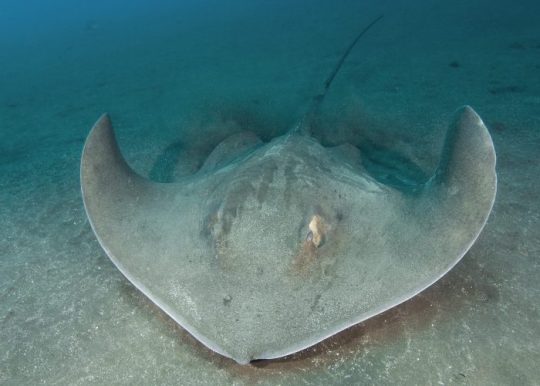

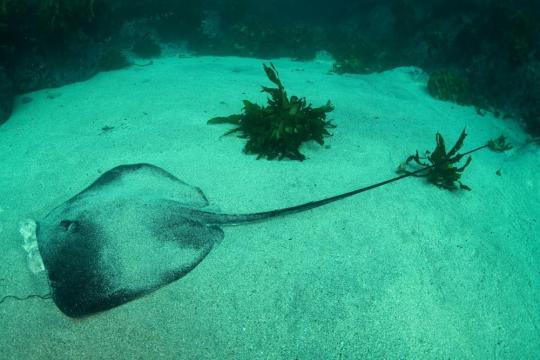
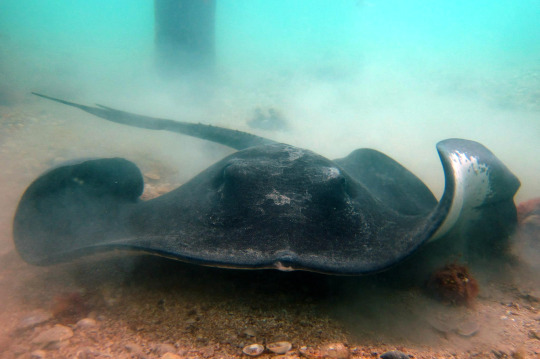
A Stingray Abroad: The Broad Stingray
Bathytoshia lata is a stingray known by many names: the broad stingray, the brown stingray, and thorn tail stingray; Dasyatis lata, Dasyatis thetidis, and Dasyatis ushii. The species has accumulated all these names-- and quite a few others-- thanks to its broad distribution. It can be found in the Atlantic, Pacific, and Indian Oceans, as well as the Mediterranean sea. Typically the species stays on reefs or in coastal bays with muddy bottoms. Prior to 2012, genetic testing of stingray species revealed them to be populations of B. lata, hence the multitude of latin names.
The broad stingray is one of the largest species of stingrays; the average individual is about 1.5 m (5 ft) across and 56 kg (123 lb), with some populations reaching an excess of 2.6 m (8.5 ft) across and 290 kg (639 lbs). Females also tend to be larger than males. The body is diamond shaped, and the tail is often more than twice its length. B. lata is dark in color, often tan or black, with a white underbelly. Perhaps its most distinctive feature are the 'spines'-- also known as dermal denticles-- that line the tail and rear portion of the body, giving it the name 'thorn tail'.
The brown stingray is fairly docile, and spends most of the day lying inactive on the sea bed. At night they forage for crustaceans, polychaete worms, and small fish. They can use their powerful pectoral fins to burrow through the sand and uncover prey, and like sharks they have special organs called ampullae of Lorenzini that allow them to detect electrical fields emitted by their prey. The primary predator of B. lata is the hammerhead shark, and when threatened individuals will raise the spines along their tail to deliver whip-like blows.
Females become ready to mate in the summer, typically from November to March. Males are attracted to pheromones released by the female, and initiate a dance-like courtship ritual. If the female is receptive, he will bite down on her pectoral fins while grasping her with special claspers located at the base of the tail. Following the mating ritual, the female gestates her young internally for 10-12 months. This species is ovoviviparous, and the pups recieve nutirents from both a yolk and internally secreted milk. Following her pregnancy, the mother gives birth to live young, typically 3-4 in a litter. The pups are completely independent, and receive no parental care after being born. It takes them about 14-16 years to become fully mature, and individuals can live up to 28 years in the wild.
Conservation status: The broad stingray is considered Vulnerable by the IUCN. Its most common threat comes from being caught as by-catch in fishing nets, and intentionally for their meat and skin.
If you like what I do, consider leaving a tip or buying me a kofi!
Photos
Andy Murch
Sarah Speight
Andrew Green
Phillipe Guillaume
#broad stingray#black stingray#Myliobatiformes#Dasyatidae#whiptail stingrays#stingrays#rays#cartilaginous fish#fish#marine fauna#marine fish#coral reefs#coral reef fish#benthic fauna#benthic fish#coasts#coastal fish#Atlantic Ocean#Indian Ocean#Pacific Ocean#Mediterranean sea#animal facts#biology#zoology#ecology
89 notes
·
View notes
Note
i’m obsessed with stingrays but can’t find any stimboards of them 😭
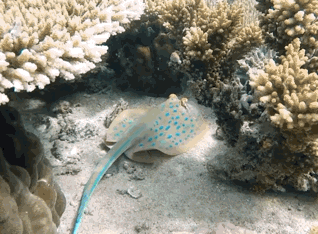


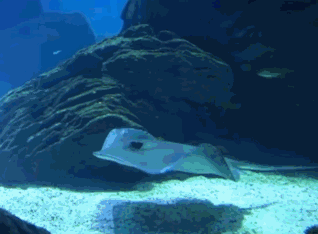





stingrays stimboard for @cuteobscenecowboy
source
51 notes
·
View notes
Text
122 notes
·
View notes
Text








The amazing digital art of Artem Chebokha
#digital art#digital painting#art#illustrations#design#animals#creatures#fantasy#elephants#bisons#rooks#fishes#crabs#reindeers#stingrays#ccranes#horses#nature
751 notes
·
View notes
Text
Taxonomy Tournament: Cartilaginous Fish


Myliobatiformes. This order of batoids includes stingrays and manta rays.
Rhinopristiformes. This order includes shovelnose rays and sawfish
#animals#biology#polls#poll tournament#zoology#stingrays#manta rays#fish#rays#shovelnose rays#sawfish#Myliobatiformes#Rhinopristiformes#0x34v0x4b
101 notes
·
View notes